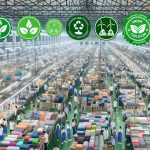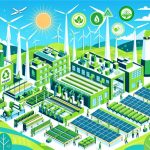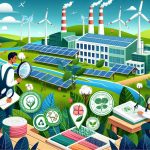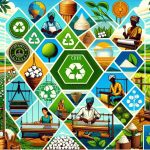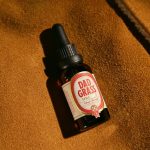When you think about sustainable fabric production, consider the impact of various certifications like GOTS, Oeko-Tex Standard 100, and Fair Trade Textiles. These certifications aren't just labels; they're assurances of environmentally conscious and ethical practices. For instance, GOTS focuses on organic farming, while Oeko-Tex emphasizes product safety. But how do these certifications really influence the textile industry, and why should you care? Understanding their significance can help you make more informed decisions, aligning your choices with sustainability goals. Let's explore how these certifications shape the future of fabric production.
Table of Contents
Key Takeaways
- GOTS Certification ensures eco-friendly practices from organic farming to sustainable dyeing and ethical production.
- Oeko-Tex Standard 100 certifies textiles free from harmful substances with annual re-evaluations.
- Fair Trade Textiles guarantee fair wages, ethical sourcing, and rigorous labor standards.
- Bluesign Approval minimizes environmental impact through strict standards, sustainability audits, and supply chain transparency.
- Recycled Content Standards emphasize organic and recycled materials, ensuring ethical practices and reduced carbon footprint.
GOTS Certification
Have you ever wondered what guarantees your organic cotton clothing is truly sustainable? Turn to the Global Organic Textile Standard (GOTS) certification. This certification is a hallmark of eco-friendly practices and supply chain transparency. When a product carries the GOTS label, you can be confident that it meets stringent environmental and social criteria throughout its life cycle.
GOTS certification starts from the very first step: organic farming. It guarantees that no harmful pesticides or synthetic fertilizers are used, preserving soil health and reducing water pollution. But the commitment doesn't stop there. Sustainable dyeing processes are also mandated, which means no toxic chemicals are used, safeguarding both the environment and the workers' health.
Moreover, GOTS puts a strong emphasis on ethical production. This certification demands fair labor practices, ensuring that workers receive fair wages and work in safe conditions. By covering every stage from harvesting raw materials to manufacturing and labeling, GOTS ensures thorough supply chain transparency.
Oeko-Tex Standard 100
While GOTS guarantees organic integrity, Oeko-Tex Standard 100 focuses on certifying the safety of textiles from harmful substances. This certification is essential if you're committed to ensuring product safety through rigorous chemical testing. By meeting Oeko-Tex Standard 100, you ascertain that every component of your textile product, from threads to buttons, is free from harmful levels of over 100 substances known to be detrimental to human health.
You'll appreciate that Oeko-Tex certification isn't a one-time achievement. Annual re-evaluations confirm that your products consistently meet stringent global textile regulations. This ongoing commitment helps you maintain high standards and adapt to new scientific findings related to chemical safety. The certification process includes exhaustive lab tests that verify compliance with both European and American regulatory requirements.
Elevating consumer awareness is another critical advantage. When your products bear the Oeko-Tex Standard 100 label, it signals to customers that their health and safety are your priority. This transparency fosters trust and can notably enhance your brand's reputation.
Fair Trade Textiles
Fair Trade Textiles guarantee that the people behind your fabrics work under fair conditions and receive equitable wages. By choosing Fair Trade certified textiles, you're not just investing in quality materials, but also supporting ethical sourcing practices that uphold rigorous labor standards. These certifications verify that workers are paid fairly, work in safe environments, and have access to essential benefits.
You're likely aware that ethical sourcing isn't just a trend; it's a necessary shift in how we approach textile production. Fair Trade Textiles encompass a holistic approach to sustainability, emphasizing both social and environmental criteria. They mandate strict labor standards that protect workers from exploitation and provide opportunities for community development.
Engaging with Fair Trade Textiles also means you're contributing to a system that values transparency and accountability. Each certified product traces its journey back to ethically managed sources, confirming that every step aligns with Fair Trade principles.
Bluesign Approval
When considering sustainable fabric production, Bluesign Approval offers a holistic approach to minimizing environmental impact. With Bluesign, you're not just focusing on the end product; you're scrutinizing the entire production process. This certification guarantees that manufacturing practices adhere to strict environmental standards, effectively reducing waste and water usage.
You'll undergo rigorous sustainability audits, which assure that every step of your production chain meets high ecological criteria.
A key aspect of Bluesign Approval is its emphasis on supply chain transparency. From raw material sourcing to the final fabric, every component is tracked and documented. This transparency fosters trust and allows you to verify that your suppliers are equally dedicated to sustainable practices.
Bluesign also mandates the use of eco-friendly dyes, which notably reduces the release of harmful chemicals into the environment. By adhering to these standards, you're not only protecting ecosystems but also ensuring safer working conditions for factory employees.
Recycled Content Standards
When considering recycled content standards, you need to understand the material sourcing criteria involved. These standards guarantee that the fabrics use a specified percentage of recycled materials.
You'll also find that the verification processes are essential for maintaining transparency and credibility.
Material Sourcing Criteria
Adhering to recycled content standards is crucial for guaranteeing the sustainability of fabric production. You'll need to focus on supply chain transparency and ethical practices to meet these standards. This means tracking every step, from where the raw materials are sourced to how they're processed and finally manufactured into fabric.
Emphasizing transparency guarantees that you're aware of any potential environmental impact and can take steps to mitigate it. To truly excel, source materials that come from sustainable farming and utilize organic materials whenever possible. Organic materials are grown without harmful pesticides and chemicals, making them better for the environment and for the workers involved.
By selecting these materials, you're not only reducing your ecological footprint but also supporting ethical practices within the industry. You should also prioritize recycled content, which includes post-consumer and post-industrial waste. This reduces the need for virgin resources and lowers the overall carbon footprint of your fabric production.
Implementing these rigorous sourcing criteria will guarantee that you're contributing to a more sustainable and ethical fabric industry. Remember, mastering these practices sets the foundation for a transparent and responsible supply chain.
Verification Processes Explained
To guarantee your fabrics meet recycled content standards, you must implement rigorous verification processes that track and validate the use of recycled materials. Start by conducting thorough supplier audits to verify that your suppliers adhere to sustainable practices and provide authentic recycled materials. This means you'll need to scrutinize their entire supply chain, from sourcing to final delivery.
Next, use traceability measures to monitor the flow of recycled content throughout your production process. This involves creating a transparent record that follows the recycled materials from the initial collection to the finished product.
Here's a structured approach:
- Supplier Audits: Regularly verify your suppliers to validate their compliance with recycled content standards.
- Documentation: Maintain detailed records of all transactions and material flows to support traceability.
- Technology Integration: Use blockchain or other advanced technologies to enhance traceability and guarantee data integrity.
- Third-Party Verification: Engage accredited third-party organizations to audit and validate your recycled content claims.
Cradle to Cradle Certified
When you're looking at Cradle to Cradle Certified fabrics, you'll first want to understand the certification process.
This involves an environmental impact assessment and strict material health criteria.
Certification Process Overview
The Cradle to Cradle Certified process rigorously evaluates your fabric production from material sourcing to end-of-life disposal. To achieve this esteemed certification, you must meet stringent certification requirements and demonstrate your commitment to advanced sustainability practices.
Here's a breakdown of what you need to focus on:
- Material Health: Guarantee all materials used in your fabric production are safe for humans and the environment. You'll need to provide detailed chemical inventories and toxicity assessments.
- Circular Economy: Implement systems for material reutilization. This includes designing products that can be recycled or safely biodegraded, effectively closing the loop on waste.
- Renewable Energy: Your manufacturing process should utilize renewable energy sources. You'll need to document your energy consumption and provide evidence of using renewable energy credits or on-site generation.
- Water Stewardship: Manage water usage responsibly. This involves treating process water to avoid contamination, implementing water-saving technologies, and ensuring water quality standards are met.
Mastering these elements not only aligns your operations with top-tier sustainability practices but also positions your brand as a leader in the eco-conscious market. By following these steps, you're not just meeting certification requirements; you're pioneering a sustainable future in fabric production.
Environmental Impact Assessment
Evaluating your fabric production's environmental impact is essential for achieving Cradle to Cradle Certified status. It's not just about meeting standards; it's about excelling in sustainable practices.
Start with a thorough life cycle assessment (LCA) to scrutinize every phase of your fabric's life—from raw material extraction to disposal. An LCA provides a holistic view, allowing you to identify areas where you can reduce waste, energy consumption, and environmental harm.
Next, immerse into carbon footprint analysis. This step quantifies the greenhouse gases your production processes emit, giving you concrete data to strategize reductions. Lowering your carbon footprint isn't just a regulatory box-tick; it's a cornerstone of sustainable excellence.
Utilize renewable energy, optimize logistics, and innovate in recycling processes to make meaningful cuts.
Material Health Criteria
Understanding Material Health Criteria is important for guaranteeing that the chemicals used in your fabric production are safe for both humans and the environment. By adhering to Cradle to Cradle Certified standards, you're committing to rigorous evaluations that identify and eliminate toxic chemicals from your production processes. This not only protects workers and consumers but also aligns with ethical practices that prioritize sustainability.
When evaluating your materials, pay attention to the following key points:
- Chemical Inventory: Document all chemicals used in production. Transparency is crucial for appraising potential risks.
- Assessment of Toxicity: Evaluate the toxicity of each chemical. This step ensures that harmful substances are identified and addressed.
- Optimization: Replace toxic chemicals with safer alternatives. Continuous improvement is essential for maintaining ethical practices.
- Verification: Regular third-party audits verify compliance. Independent verification adds credibility to your sustainability claims.
Mastering these criteria not only enhances your brand's reputation but also fosters a healthier planet. By taking these steps, you'll be able to create fabrics that are both high-quality and responsibly produced. It's a win-win for your business and the environment, reinforcing your commitment to sustainable and ethical practices.
Frequently Asked Questions
How Do Certifications Impact the Overall Cost of Sustainable Fabric Production?
You're examining how cost implications shape overall production efficiency. Certifications might increase upfront costs, but they streamline processes and boost efficiency over time, ultimately balancing out expenses and ensuring sustainable fabric production remains economically viable.
What Are the Benefits of Sustainable Fabric Certifications for Small Textile Producers?
Did you know 68% of consumers prefer eco-friendly products? By obtaining sustainable fabric certifications, you can meet market demand, boost competitiveness, and reduce environmental impact, making your supply chain more attractive to conscientious buyers.
How Can Consumers Verify the Authenticity of Sustainable Fabric Certifications?
You can confirm the authenticity of sustainable fabric certifications by researching the certification body, checking their official website, and looking for verification codes. This confirmation process builds consumer trust and guarantees genuine sustainable practices.
Are There Certifications Specific to Synthetic Sustainable Fabrics?
Did you know that 60% of fabric is synthetic? Yes, certifications exist for synthetic fibers. They guarantee eco-friendly practices, like GRS (Global Recycled Standard), which verifies recycled content and sustainable production methods. Always check labels carefully.
What Role Do Government Regulations Play in Sustainable Fabric Certifications?
Government regulations notably influence sustainable fabric certifications. They guarantee products meet strict environmental impact standards. By adhering to these rules, you help reduce pollution and promote eco-friendly practices, ultimately contributing to a healthier planet.
- The Benefits of Using Nonwoven Wallpaper in Your Home - July 11, 2025
- Nonwoven Fabric vs. Paper: A Comparison of Properties - July 11, 2025
- The Role of Nonwoven Fabrics in Filtration Systems - July 11, 2025



